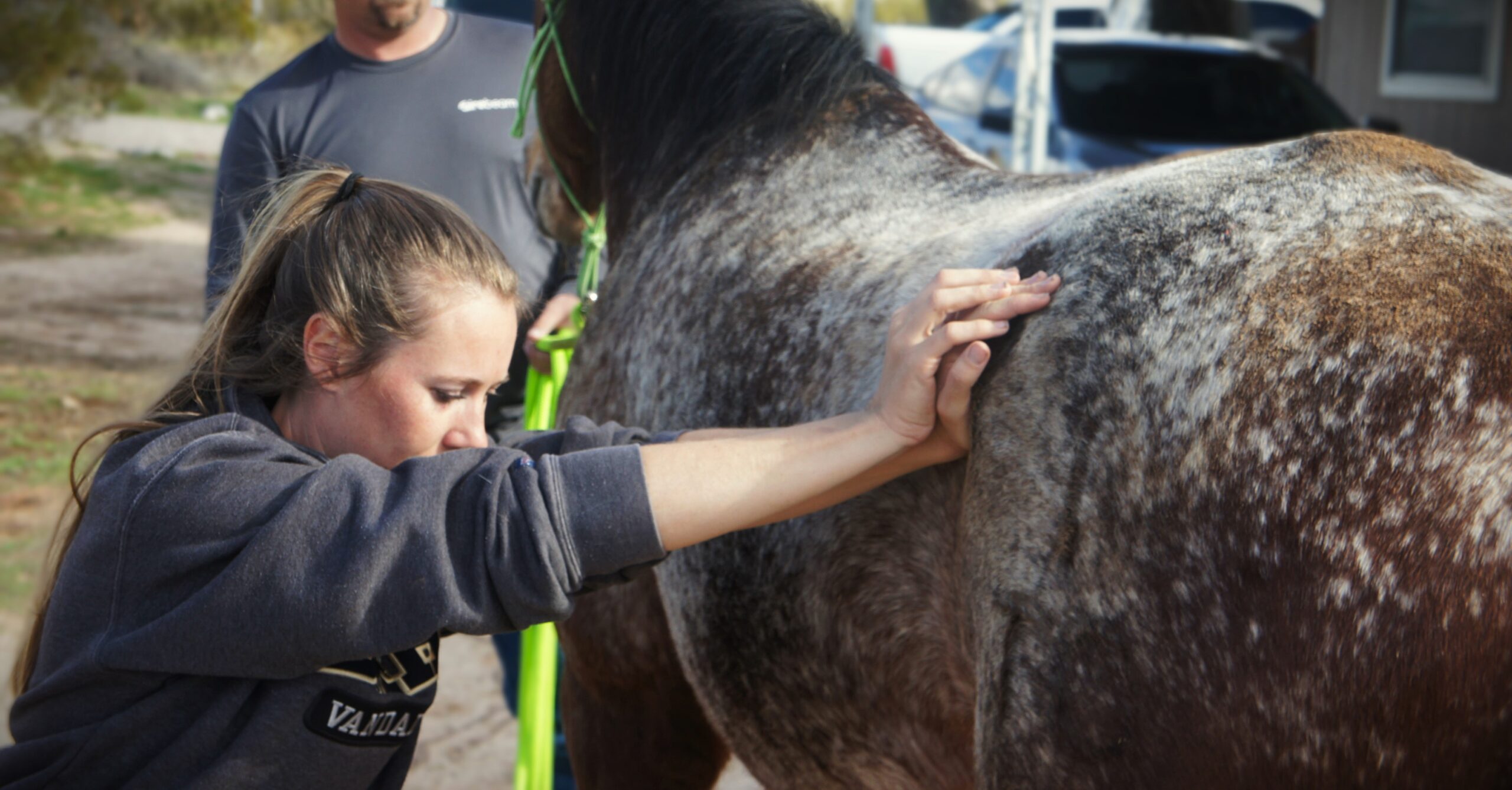Is your horse suddenly having a change in behavior or attitude? Has his/her performance been poor lately? Does your horse have some muscle atrophy, poor posture, or a change in the topline? Herd Health Management has seen how chiropractic care may be what your equine partner needs.
Signs that Your Horse May Need Chiropractic Sessions
Horses can experience discomfort and stiffness that impact their performance and daily comfort. If your horse has been acting differently, underperforming, or showing subtle physical changes, these could be signs of underlying musculoskeletal issues. These are some common symptoms to watch for that might indicate your horse could benefit from a chiropractic adjustment:
- Acting cinchy or girthy
- Back soreness
- Stiffness
- Not bending well in one or both directions
- Tripping
- Not wanting to pick up a certain lead, not able to lead change
- Cross-firing at the lope/canter
- Head tossing
- Head tilt
- Head shaking
- Difficulty chewing
- Running through the bit, pulling on reins
- Uneven muscle development
- Trouble getting up and down
What is Chiropractic Care for Horses?
Equine chiropractic is a therapeutic treatment that focuses on the musculoskeletal system by manipulating the spine and joints to improve mobility, performance, and overall health. There are 205 bones in a horse’s skeletal system, one bone less than their rider. Horses have multiple types of joints, but the most common are synovial joints. These are movable joints that have fluid-filled capsules. Examples of a horse’s synovial joints include:
- Carpus (their knee, equivalent to the human wrist)
- Stifle (equivalent to the human knee)
- Hock (equivalent to the human ankle)
- Hip
Common Joint Issues by Equine Discipline
There is a trend of common joints that “go out” depending on a horse’s discipline. Barrel horses often need adjustments in their shoulders. Dressage horses tend to require adjustments in their neck. Reining horses frequently need adjustments in their pelvis or hips.
What to Expect During Your Horse’s Chiropractic Visit
When your horse presents for an adjustment, the veterinary professional will first observe the way your horse is moving. From that initial evaluation, they will have an idea of what is going on with your horse. The chiropractic session will likely proceed with aligning the spine by manipulating:
- The 7 cervical vertebrae (neck)
- Moving into the withers with the 18 thoracic vertebrae (each connects to a rib)
- Down to the 5-6 lumbar vertebrae (lower back, depending on breed)
- Ending at the 5 sacral vertebrae that fuse to form the sacrum, connecting the spine to the pelvis
After aligning the spine, the veterinarian will evaluate the rest of your horse’s joints, test range of motion, and make adjustments as needed to get your horse feeling great again. Most horses improve after the first adjustment, while some may need a second one.
Find Relief for Your Equine with Horse Chiropractic in Gilbert, AZ
Does your horse need chiropractic care? At Heard Health Management, Dr. Casterton will see your horse for an initial consultation and give you an honest opinion. As beneficial as equine chiropractic is, some horses might have something more going on that is beyond chiropractic care. Dr. Casterton will be able to help you through that. If that is the case, we will get you in the right direction with our resources! Book an appointment today for an assessment. We serve horses as a mobile vet in Gilbert, San Tan Valley, Mesa, and nearby Arizona areas.

